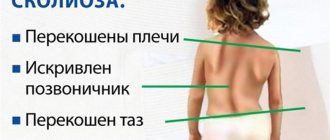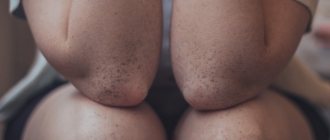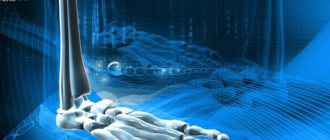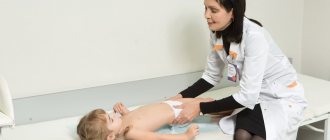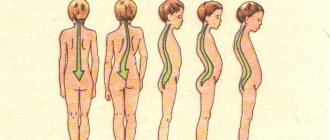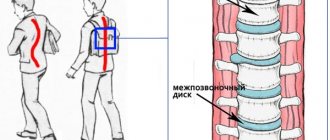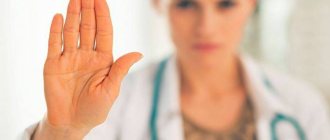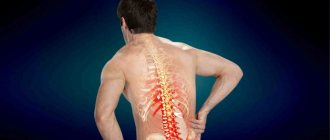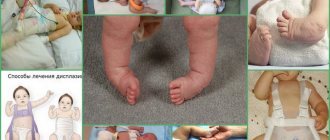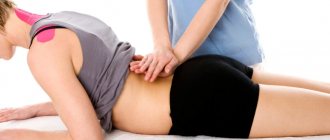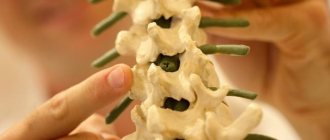Poor posture in children is a common deviation caused by curvature of the spine in the frontal and/or sagittal planes. According to statistics, deformities occur in 2% of children at an early age (up to 3 years), and among older schoolchildren, more than 60% of students already suffer from it. The causes are both congenital abnormalities and birth injuries, but most often - an incorrect approach to raising a child, lack of physical activity, and poor social and hygienic conditions. Acquired postural disorders account for more than 90% of all cases.
Their danger lies in the abnormal formation of the skeleton, due to which the load on the body is distributed unevenly, which entails increased wear of joints, displacement of bones, and deviations in the development of internal organs. Diseases such as scoliosis, osteochondrosis, intervertebral hernia are all consequences of spinal deformities that are not identified and not eliminated in time.
At any age, poor posture should be given the closest attention, but it is especially important to do this in relation to children, since the child’s overall health depends on the correct formation of the child’s skeleton. Moreover, it is quite easy to correct deviations with minimal intervention from an osteopathic specialist. The manual techniques he uses allow him to provide a delicate, targeted effect on those points of the body that need it. This allows you to quickly achieve the desired result by restoring the equilibrium position of the child’s skeletal bones.
Parents themselves should take care of their child’s posture, especially since there are effective sets of preventive exercises that allow you to maintain and correct the child’s physical shape. Once again, a specialist will help you choose the most suitable complex, who will also balance the child’s diet so that his body receives all the necessary vitamins and minerals.
What is poor posture?
Postural disorders in children and adolescents have become increasingly common in recent years. This
associated with heavy loads in kindergarten, school, gymnasium, and lyceum. Due to the fact that a child's muscle development lags behind skeletal growth, postural disorders are very common. Orthopedists work hard. According to the private medical practice Sarklinik, 92.3% of students in schools have various types of posture disorders (from mild to severe). Girls get sick more often than boys. Postural disorders are more often observed from the age of 6 years. Peak incidence is observed at 12, 13, 14, 15 years of age.
Treatment
Clinical recommendations for identifying disorders are comprehensive. The main goal of therapy is to form a strong muscle corset and develop the correct stereotype of body position. For this purpose they prescribe:
- Physical therapy, gymnastics . Adequate physical activity according to age is an important part of therapy. Exercises help strengthen muscles, form a strong frame that will fix the spinal column in the correct position. Source: Exercise therapy for postural disorders, scoliosis and flat feet. Aliverdieva M.S., Demyanova L.M., Smirnova O.S. Psychology and pedagogy: methods and problems of practical application, 2021.
- Massage . The patient is selected the necessary type of massage: general, orthopedic, back, chest, lower back, etc.
- Physiotherapy . Good effects are demonstrated by electrophoresis, electrical stimulation of the spinal muscles, thalassotherapy, peloid therapy and other procedures that are carried out in courses as prescribed by a doctor.
- Manual therapy . Sessions help correct the position of the spine by releasing compressed nerve fibers, normalizing nerve impulses, and removing blocks.
- Hydrotherapy . Involves the use of water procedures that stimulate blood circulation, relieve spasms, and correct curvature.
- Therapeutic swimming . Allows you to naturally unload the spine, establish symmetrical muscle function and strengthen them, improve coordination of movements. Source: Correction of poor posture in school-age children. Danilenko L.A., Artamonova M.V., Artemyeva E.M. Medicine: theory and practice, 2021. p. 181.
The main causes of postural disorders, postural defects
What causes poor posture? The main causes of postural disorders : perinatal encephalopathy, birth injuries of newborns and their consequences, abnormal intrauterine development of the spine, rickets, consequences of rickets, radiculitis, tuberculosis, different leg lengths, physical inactivity, spinal injuries, flat feet, poliomyelitis, early sitting of a small child in the first year of life . Poor vision (myopia, strabismus) is a common cause of poor posture. If a child gets little rest, sleeps on a regular mattress, or sits incorrectly at the table, then be sure to expect posture problems. Tight clothing, poor physical fitness, and carrying heavy weights in only one hand have a very bad effect on your posture.
Diagnostics
If symptoms are detected and there are suspicions of the development of disorders, one should not delay consultation with a pediatric orthopedic traumatologist or vertebrologist. The specialist conducts a visual examination: examines the bone structures in a standing position. In this case, it is important to evaluate the position in all projections: rear, side, front. The doctor looks for deviations from the normal position of the skeleton and studies the presence of asymmetry. For maximum accuracy, the specialist measures various evaluation indicators: the distance between the shoulder blades, the length of the legs, the segment between the lower corners of the shoulder blades and the seventh cervical vertebra, etc.
One of the most effective methods for diagnosing disorders is the Adams test. To carry it out, you just need to tilt the patient's torso forward. Thanks to this, the doctor will determine the degree of twisting and the state of the vertebral curves, which help identify scoliosis.
In order to establish the diagnosis as accurately as possible and develop an effective treatment regimen, the doctor prescribes additional instrumental studies: x-rays, computed tomography or magnetic resonance imaging. Source: Diagnosis of postural disorders and deformities of the spinal column. Orlov S.A., Yukhvid E.V., Ionina E.V. Russian Bulletin of Perinatology and Pediatrics, 2021. p. 269.
Signs of posture disorders, symptoms
How to identify poor posture? Parents, as a rule, do not notice the first signs of poor posture And they turn to specialists when the symptoms are already pronounced. Sometimes children may experience decreased attention, weakness, fatigue, pain or discomfort in the spine, chest, or back. The child begins to stoop, the child’s shoulder blades are located at different levels, there is an asymmetry in the height of the shoulder blades and shoulders, and different sizes of waist triangles. There is asymmetry of the waist, changes in the curvature of the spine, pain in the feet, stooping, and pain when walking. There may be a tilt of the head forward, a narrowing of the chest, protrusion of the abdomen, bringing the shoulders forward, a flat chest, an increase in the width of the foot, heaviness in the legs, and rapid fatigue when walking.
, unfixed changes in the musculoskeletal system occur in boys and girls, boys and girls .
Symptoms
The effectiveness of combating distortion depends on how early parents recognized the presence of deviations and sought medical help. First of all, it is necessary to regularly examine the child. It is important to pay attention to the position of the shoulders and shoulder blades, which should be at the same level. If it is difficult to make a visual assessment, you can use available tools for this.
It is easy to detect abnormalities in babies by the folds under the buttocks, as well as by the position of the collarbones and nipples. They should be symmetrical and on the same level.
Viewing from the side will reveal a stooped or rounded back. The simplest test is to place the child's back against a wall. The back of the head, shoulder blades, buttocks and lower legs should touch a flat plane. After this you need to take a step forward. If there are deviations, they will immediately become visible.
The most obvious signs of pathology can also help recognize the presence of postural disorders in a child :
- When you slouch, your head and shoulders move forward, and your shoulder blades protrude unnaturally back.
- With kyphosis (round back), the head tilts forward, the shoulders droop, and the chest sinks. At the same time, there is flattening of the buttocks, half-bent legs and weakened muscle tone.
- With kypholordotic disorders (round-concave back), the head and upper shoulder girdle tilt forward, the stomach protrudes, and excessive extension of the legs at the knees occurs.
- With lordosis and thoracic kyphosis (flat-concave back), the angle of the pelvis increases, the buttocks and pelvis protrude.
- With a flat back, the pelvic tilt decreases, the shoulder blades protrude back, and the stomach protrudes forward.
- Asymmetrical posture is manifested by an arched deformation, which is directed to the right or left. The head tilts to the side, and the shoulder blades, shoulders and nipples are at different levels.
Children with such disorders suffer from lethargy, apathy, anemia and poor memory. They often suffer from colds, pneumonia, and bronchitis. There are complaints of pain in the back and head, poor vision.
Prevention of postural disorders, recommendations for prevention of postural disorders in children
What is the prevention of postural disorders ? If you have poor posture, you need to follow certain rules. You cannot carry a briefcase in one hand (right or left); in elementary school you should only use a backpack. It is necessary to limit the time spent sitting in a static position. The time of continuous sitting in a sitting position should be no more than 40 minutes. The optimal duration of classes is 40 minutes. The child’s nutrition should be complete and balanced, containing the optimal content of protein, calcium, phosphorus, macroelements, microelements, and vitamins for age. The student's or child's workplace must be properly organized, the light must be diffused and sufficient. The table and chair must correspond to the height of the child. The distance from the eyes to the textbook or notebook should be 40 cm. It is necessary to ensure that the child sits straight, not only at the study table, but also while playing, watching TV, playing on an iPad, tablet, iPhone, cell phone, smartphone, computer, laptop, netbook. After school, the child should have lunch, and then lie down and rest for 60–90 minutes in order to normalize the condition of the back muscles and relieve the spine from stress. With regular changes in vertical and horizontal positions, proper metabolism in the intervertebral discs is ensured. The bed (bed, mattress) should be semi-rigid, stable, level with a low orthopedic pillow. The mattress (some people incorrectly say “mattress”) must be orthopedic and match the weight and age of the child. A boy or girl should not sleep on a soft, sagging mattress. It is better to sleep on your back or side. Every day the child should do gymnastics for 20–40 minutes. In case of illness and for a certain period of time after illness, gymnastics is not performed. While studying, you need to sit in the correct position, in which there should be maximum support for the torso, arms, legs, and a symmetrical position. Harden the child's body.
Formation of correct posture in young children (up to 3 years old)
Remember that the health of your baby is in your hands and the formation of correct posture also depends on proper careful care. It is necessary not only to independently monitor the baby’s spine, but also to undergo regular examination by an osteopathic specialist who will be able to detect and diagnose negative changes at an early stage, when they are quite easy to correct. It is at an early age, when the child has not yet reached 3 years of age, that it is necessary to closely monitor his developing posture:
- An infant should not be placed or seated on soft pillows or feather beds. The baby's crib should be quite hard. Teach your child to sleep on hard things from an early age;
- From the age of 3 weeks, the baby can already be placed on his stomach. Do this gradually, at first only under supervision. Alternate the position of the child - on the back and on the stomach. If you often carry your child in your arms, then do not do it constantly on one arm;
- Don't try to teach your child to walk at an early age. The baby's spine and muscles are not yet strong enough to withstand the load, so at an early age it is easy to injure the skeletal bones, which will subsequently lead to posture problems. The child will instinctively begin to stand up and try to walk when his physical condition allows him to do so;
- From an early age (2-3 years), teach your child to sit correctly in a chair. Try to instill in him the proper position so that he remembers it on a reflex level;
- When walking, do not lead your child by the hand, since due to the large difference in height, he will have to bend over, stretch out his arm, and be in an uncomfortable position for a long time, which ultimately negatively affects his posture. At an early age, use a special walking harness to control the child.
Treatment of posture disorders in Saratov
Sarklinik provides treatment for postural disorders in children in Saratov (boys and girls), treatment for postural disorders in adolescents in Saratov (boys and girls), treatment for postural disorders in preschoolers and schoolchildren. Complex treatment using procedures, reflex massage, hardware and non-hardware methods allow you to restore correct posture. A healthy spine means a healthy body. Sarklinik knows how to correct posture problems , how to treat and how to cure posture problems . On the website sarclinic.ru you can ask the doctor a question.
Sign up for a consultation. There are contraindications. Specialist consultation is required.
Photo: (©) Dml5050 | Dreamstime.com \ Dreamstock.ru The people depicted in the photo are models, do not suffer from the diseases described and/or all similarities are excluded.
Related posts:
Poor posture in children, treatment in Saratov, prevention, causes, types of spinal curvature
Vertebrogenic lumbodynia: treatment of back and lower back pain in Saratov
Lumbago: treatment of back pain in Saratov, lower back pain, lumbago
Vertebrogenic lumboischialgia: treatment, pain in the leg and back, back pain, radiates to the leg
Osteochondrosis of the spine, treatment in Saratov, chondrosis
Comments ()
Medical Scientific and Practical Center for Vertebrology and Neuroorthopedics, Professor M.L. Kurganov
POSTURE is the habitual vertical position of the human body, which is maintained at rest and in movement. It is characterized by a proudly raised head, parallel shoulder girdles, symmetrical shoulder blades that are pressed to the chest, identical waist triangles and a horizontal arrangement of the iliac bones. In this case, the plumb line from the center of the occipital bone of the skull repeats the axis of the spinous processes of the vertebrae. Correct posture is determined by the severity and condition of the natural curves of the spine.
Unfortunately, correct, beautiful posture is not characteristic of all people. Most have some peculiarities in the formation of physiological curves, and we will return to pathological ones later. There is a somewhat relative concept of normal. What is normal posture? Who determined what she is like? Normal? After all, all people are different. Everyone is individual. A newborn has only one curvature of the spine - kyphosis - with a convexity at the back. As it grows and the muscular system strengthens under the loads that arise, natural curves of the spine gradually appear and form. So, by the time the child begins to hold the head, cervical lordosis begins to form (2-3 months of life), and by the time the child becomes able to sit (5-7 months of life), lumbar lordosis begins to appear. The formation of natural curves of the spine continues for the first 6-7 years of a child’s life, and only by the time he enters school (6-7 years old) should the natural curves of the spine be clearly defined, and therefore, from this age we can talk about normal or pathological posture. As the child grows and develops, the formation of posture continues and this process must be monitored and managed.
However, healthcare practice often allows for elements of “reinsurance.” Although from a statistical point of view this is not clear. In fact, having conducted more than one medical examination in kindergartens and schools, I can say with confidence that the majority of diagnosed “scoliosis” is nothing more than a functional scoliotic posture. At the stage of a “random” examination by a doctor who conducted a dispensary appointment and labeled it “scoliosis,” there is no need to rush around and run to all the procedures prescribed “according to the scheme.” Exercise therapy, massage, swimming, anti-scoliosis bandage... All this takes a lot of time, first of all. But it goes away... And functional scoliosis, with the child’s active growth in a year or three, turns into morphological scoliosis, despite all the “efforts” of the parents. A deep understanding of the mechanisms of formation of compensatory curvatures of the spine is the key to solving the problem! Look for a doctor who will give reasonable and complete answers to all your questions. So let's continue...
Junior school age (7-11 years) is characterized by slow growth of the body in length. The musculoskeletal system gradually strengthens, the muscles become stronger. Children are very active, but get tired quickly. Relatively long sessions at a table or desk in a sitting position with a relatively weak musculoskeletal system contribute to the occurrence of various types of postural disorders. During this period of childhood, exercises that provide a large strength load or require significant endurance are unacceptable. “Game method” exercises, morning exercises, and physical education breaks during lessons are recommended. The formation of correct posture largely begins at primary school age.
Middle school age (12-15 years old) . During this period, the adolescent’s body undergoes increased growth in length. The spine is characterized by the greatest flexibility and plasticity. The growth of muscle and ligamentous tissue lags somewhat behind the development of the bone skeleton. This may become a predisposing factor for the occurrence of postural disorders and spinal deformities under unfavorable conditions. A period of complex hormonal changes begins, creating the “angularity of the ugly duckling.” During this period, dosed strength exercises are acceptable. Endurance exercise should be limited. During this period, there are most often predisposing factors to the development of stoop, especially in girls.
Senior school age (16-18 years old) . The bones grow in width most intensively, the spine becomes more stable and strong. Muscle mass increases, muscle strength increases. Posture stabilizes, and any possible deviations from the norm must be corrected immediately. There is little time left...
The main role in the formation of posture is played not by absolute muscle strength, but by the uniform and correct distribution of muscle tension (tone) . Posture largely depends on the full development of the spine. Good posture has aesthetic and great physiological significance.
All posture disorders are divided into two groups:
- congenital
- acquired.
Congenital ones make up 5-10% of the total number of torso deformities. Their causes are most often congenital diseases and deformations of the spine, its parts, ribs, chest, pelvis, hip joints, and legs.
Acquired deformities can be caused by weakness of the trunk muscles, mainly the back and anterior abdominal wall with improper distribution of muscle tone, and weakness of the natural muscle corset. As a result of the influence of various living conditions, study, work, etc. a predominance of the strength of individual muscle groups may develop, which leads to incorrect body postures in space. The muscles of one half of the body (right-handed, left-handed) can develop, which can lead to curvature of the body in one direction. But muscle strength is not the basis of posture. Uneven development of the muscular system contributes to the appearance of uneven pressure on the growth zones of the vertebral bodies. As a result, the growth of the vertebral bodies in the area of increased axial pressure slows down and their gradual deformation is formed, leading to poor posture.
Initially, deformations and changes in normal posture are functional in nature. This means that there is a curvature, but the bones of the spine have not yet deformed or changed their anatomical shape. Lack of proper timely correction and attention to your body leads to permanent structural changes in the spine. This condition gradually transforms into a new quality - scoliotic disease, which is characterized by many signs and symptom complexes.
Sitting at a desk for a long time at school in an incorrect position with poor physical development of the child and genetic predisposition may be a predisposing factor to the development of postural disorders or more severe curvature of the spine. In early childhood, curvature is promoted by carrying a child in one arm, holding the child by the same hand while walking. Subsequently, carrying a heavy briefcase in one hand, standing with support on the same leg, sleeping on the same side on a soft bed with a high pillow. The habit of sleeping in a curl can lead to the development of a round back and smoothing of “physiological” curves. In addition, poor posture is caused by improper seating of the child at a desk that does not correspond to his height, poor gait as a result of foot characteristics, prolonged sitting in general, and prolonged cycling.
The following types of postural disorders are distinguished (according to Stoffel):
Flat back. Characterized by the complete disappearance of the natural curves of the spine. The muscles of the natural muscular corset are very weak. This condition can lead to the development of scoliosis. A flat back is relatively rare and accounts for no more than 1-2% of all postural disorders.
A round back is characterized by a significant increase in thoracic kyphosis with normally pronounced cervical lordosis. Lumbar lordosis increases significantly. Against this background, thoracic kyphosis is even more pronounced. A round back does not always characterize only poor posture. Often, round back syndrome can be a symptom of more severe structural diseases of the spine. Such as Scheuermann-Mao disease, Forestier disease. Children need to be further examined by X-ray and possible spinal diseases should be identified in a timely manner.
Slouching . The most common type of posture disorder. It is more often detected in teenage girls. Objectively, they have increased cervical lordosis. It seems that the child walks all the time “thinking”, “withdrawn into himself” with his head bowed, with his shoulders drawn together. Thoracic kyphosis does not change, but lumbar lordosis flattens. The anterior abdominal wall becomes “saggy” due to the shift of the center of gravity of the body forward. If you ask the child to straighten his shoulders, position his head correctly, and “remove his stomach,” then these signs disappear for a very short time. This means that this posture has become a “habit”. With persistent stooping and improper load on the intervertebral discs, clinical symptoms of osteochondrosis of the mid-thoracic spine appear very early in these children with age.
Round-concave back and flat-concave back - these two types of posture disorders are very rare. Their manifestation is due to complex changes in the spine, both in the sagittal and frontal planes.
There is also scoliotic posture (according to Chaklin: “functional scoliosis”), it is characterized by curvature of the spine in the frontal plane without rotation around the vertical axis of the vertebral bodies.
For the correct formation of the spine, it is necessary to pay more attention to the development of the child’s body, regularly, but without focusing on this, conduct parental assessment of posture. It is unlikely that the local pediatrician will pay more attention to this than the parents. will pay attention to Gymnastics, team sports, and alternating child activities that contribute to the correct development of the musculoskeletal system in general and correct posture in particular. The baby should sleep on a moderately hard bed with a small head pillow, in a supine position rather than in the fetal position. This primarily depends on the constitutional characteristics of the body. Accordingly, the same mattress and pillow will not suit a “skinny” child or an overly plump child. It is necessary to carry loads, evenly distributing the weights in the right and left hands, and it is best to use a backpack or satchel for these purposes. A correctly chosen workplace with adequate lighting is also important.
